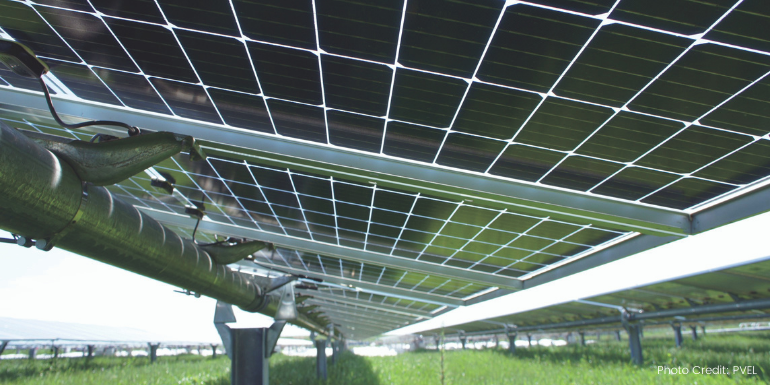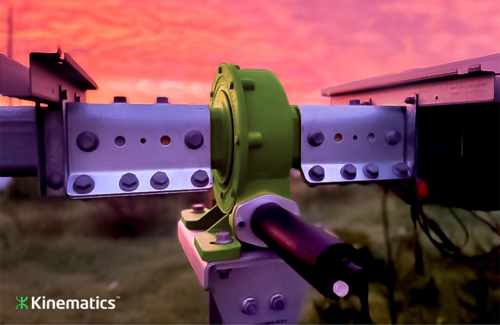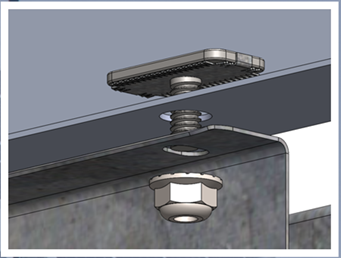
自从引入太阳能跟踪器以来,双面光伏技术代表了最大的一次平均能源成本(LCOE)改善机会。挑战在于如何充分利用双面光伏电站的价值。为了抓住这个机会,投资者需要能够准确,自信地预测双面性能。为了使双面收益能够融资,必须首先是可预测的。
这些介绍性的话来自PV Evolution Labs(PVEL)首席执行官Jenya Meydbray,并且是Nextracker的新白皮书“量化您的双面收益:使用校准的PVsyst模型输入参数来准确预测现场性能”的贡献者。Jenya雄辩地抓住了两个时代的时代精神,并提供了我们发表该论文的许多基本原理。随着双面PV可能改变游戏规则,该技术的大规模部署仍处于早期阶段,尽管发展迅速。为了使双面器械发挥其市场潜力,准确建模和测量双面器械性能的能力至关重要。为了做到这一点,我们需要大量的现场测试数据,并且需要专注于使模型被调用。
利益相关者的可行内容
白皮书介绍了我们的测试方法和发现,目的是为努力描述现场两用系统性能的开发人员,金融家,独立工程公司和性能工程师提供可行的内容。这篇文章是博客系列的第一篇文章,该文章摘录了论文的重点和主要内容。在以后的文章中,我们将讨论我们在现实中的双面测试结果,深入研究NX Horizon跟踪器的PVsyst输入校准,并共享数据来证明NX Horizon相对于其他跟踪器的双面增益优势。
双面光伏模块将在光伏电池的正面和背面捕获的辐照度转换为电能。从制造角度来看,从单面钝化发射极和后电池(PERC)到双面PERC PV模块的演进是渐进的,仅需要修改的太阳能电池背面金属化图案和某些模块封装调整。在现场,模块公司的这一小步可能是全球能源转型的一大飞跃。

太阳能跟踪器的双面实现最低LCOE值
一项最新的技术经济评估基于LCOE评估了全球大型光伏电站架构的产量潜力和成本效益,并暗示了安装在跟踪器上的双面光伏系统的破坏性潜力。该报告得出的结论是:“双面单轴跟踪器装置的LCOE值最低,占总土地面积的93.1%。” 敏感性分析表明,这些结果“在广泛的参数变化范围内”,强调了“双面单轴跟踪系统改变光伏市场的潜力”。
如果利益相关者不能信心十足地模拟两面收益,则单面和两面绩效之间的差异很有趣,但没有影响。业界精确且一致地建模单面光伏系统性能的能力降低了项目风险,债务成本和采用障碍。就双面绩效模型带有相对不确定性和可感知风险的程度而言,金融家可能会使这些项目承受较高的债务偿还比率,从而降低盈利能力。
双面PV增益的精确建模至关重要
使用行业标准软件准确地模拟双面收益需要结合产品,设计和位置特定的模型输入:
- 例如,双面性因子是特定于模块的PVsyst输入,用于量化标准测试条件下的背面功率与正面功率之比。
- 行间距和跟踪器高度是特定于设计的。
- 影响地面和光伏组件背面辐射的变量。
- 天气和地面反照率是波动的特定位置变量,会显着影响野外性能。
上面缺少的是PVsyst模型的特定于跟踪器的输入,Nextracker,其项目合作伙伴和其他行业利益相关者都非常感兴趣。
为了消除消除全球能源转型的障碍,Nextracker在加利福尼亚的弗里蒙特设有一个先进的测试实验室。自2013年以来,我们就在太阳能卓越中心研究了某种程度上的双面性能。我们在2019年第一季度投入了专门的双面测试平台,该平台将具有商业代表性的Mono-PERC PV模块集成在最新版本的NX Horizon单轴上追踪器。
无论是从实际的双面收益的大小,还是我们对PVsyst中这些经验收益建模的能力来看,从这个世界级的双面测试实验室获得的高收益都是令人鼓舞的。

Amir Asgharzadeh Shishavan博士是Nextracker的PV系统性能工程师,致力于双面技术的研发和进步。
测试表明,与等效的单面弦相比,在人像(1P)单轴跟踪器上配置的行业标准单PERC双面电弦可提供额外的DC侧能量收益。在低反照率条件下(〜20%),这些额外的双面增益大约为5%至7%;在高反照率条件下(〜50%),则为10%至12%。这些并网测试结果与国家可再生能源实验室(NREL)和PVEL运营的双面测试站点的数据高度吻合。
原文:
The Importance of Capturing the Full Value of Bifacial PV with Accurate Modeling and Measurement
Bifacial PV technology represents the single largest levelized cost of energy (LCOE) improvement opportunity since the introduction of solar trackers. The challenge is to fully capture the value of bifacial PV power plants. To realize this opportunity, investors need to be able to accurately and confidently predict bifacial performance. For bifacial gains to be financeable, they must first be predictable.
Those introductory words come from Jenya Meydbray, CEO of PV Evolution Labs (PVEL) and contributor to Nextracker’s new white paper titled “Quantifying Your Bifacial Gains: Using Calibrated PVsyst Model Input Parameters to Accurately Predict In-Field Performance.” Jenya captures both the bifacial zeitgeist eloquently and provides much of the rationale behind our publication of the paper. As game-changing as bifacial PV is likely to be, the mass deployment of the technology is still in its early stages, albeit at a rapidly accelerating clip. For bifacial to achieve its market potential, the ability to accurately model and measure bifacial performance is crucial. And to do that, we need lots of field testing data and a laser focus on getting the modeling dialed in.
Actionable Content for Stakeholders
The white paper presents our test methodology and findings with the goal of providing actionable content for developers, financiers, independent engineering firms, and performance engineers struggling to characterize fielded bifacial system performance. This post is the first in a blog series that will excerpt highlights and major takeaways from the paper. In future installments, we will discuss our real-world bifacial test results, take a deep dive into the calibration of PVsyst inputs for our NX Horizon trackers, and share data that demonstrates NX Horizon’s bifacial gain advantage over other trackers.
Bifacial PV modules convert irradiance captured on both the front and back sides of PV cells into electrical power. From a manufacturing perspective, the evolution from monofacial passivated emitter and rear-cell (PERC) to bifacial PERC PV modules is incremental, requiring only a modified solar cell back-side metallization pattern and certain module-packaging adjustments. In the field, this one small step for module companies is potentially one giant leap for the global energy transition.

Bifacial on Solar Trackers Achieves Lowest LCOE Values
A recent techno-economic assessment evaluates yield potential and cost effectiveness based on LCOE for large-scale PV power plant architectures around the world and hints at the disruptive potential of tracker-mounted bifacial PV systems. The report concludes that “bifacial single-axis tracker installations achieved the lowest LCOE values for 93.1% of the total land area.” Sensitivity analyses indicate that these results hold “over a wide range of parameter changes,” emphasizing “the potential of bifacial one-axis tracking systems to transform the PV market.”
If stakeholders cannot model bifacial gains with confidence, the difference between monofacial and bifacial performance is interesting but not impactful. The industry’s ability to precisely and consistently model monofacial PV system performance has reduced project risk, cost of debt, and barriers to adoption. To the extent that bifacial performance models carry comparatively uncertainty and perceived risk, financiers may subject these projects to a higher debt-service coverage ratio, reducing profitability.
Accurate Modeling of Bifacial PV Gains Is Crucial
Accurately modeling bifacial gains using industry standard software requires a combination of product-, design-, and location-specific model inputs:
- The bifaciality factor, for example, is a module-specific PVsyst input that quantifies the ratio of back-side power to frontside power under standard test conditions.
- Row-to-row spacing and tracker height are design-specific.
- Variables that influence irradiance on the ground and the rear side of the PV modules.
- Weather and ground albedo are fluctuating location-specific variables that significantly affect in-field performance.
Missing from the above are tracker-specific inputs to the PVsyst model, a subject of considerable interest to Nextracker, its project partners, and other industry stakeholders.
To help eliminate barriers to the global energy transition, Nextracker operates a state-of-the-art testing laboratory in Fremont, California. At our Center for Solar Excellence, we have studied bifacial performance, in some capacity, since 2013. We commissioned a dedicated bifacial testbed in Q1 2019, which integrates commercially representative mono-PERC PV modules on the latest version of the NX Horizon single-axis tracker.
High-level takeaways from this world-class bifacial testing laboratory are encouraging, both in terms of the magnitude of real-world bifacial gains as well as our ability to model these empirical gains in PVsyst.

Amir Asgharzadeh Shishavan, PhD, serves as Nextracker’s PV Systems Performance Engineer, focusing on R&D and advancements in bifacial technology.
Testing indicates that industry standard mono-PERC bifacial electrical strings fielded on one-in-portrait (1P) single-axis trackers provide additional DC-side energy yield gains as compared to equivalent monofacial strings. These additional bifacial gains are on the order of 5% to 7% under low-albedo conditions (~20%) and 10% to 12% under high-albedo conditions (~50%). These grid-connected test results are in good agreement with data from bifacial test sites that the National Renewable Energy Laboratory (NREL) and PVEL operate.












